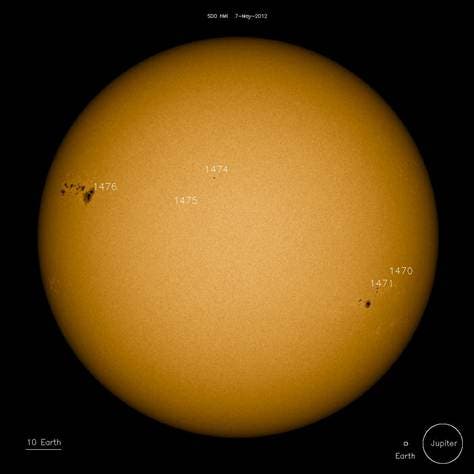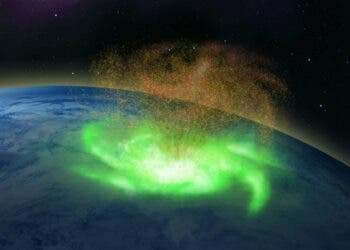
Astronomers have observed a huge sunspot group on the surface of the sun, sized at more than 60,000 miles across, which might outbreak in a potentially hazardous solar storm.
From time to time, the sun spews huge energy releases called solar flares, which depending on their magnitude (the weakest are “C” class and the most powerful are “X” class) can cause radio blackouts and irremediable damage to satellites. Powerful sun flares are sometimes, however, joined by coronal mass ejections (CMEs) that cause geomagnetic storms on Earth. CMEs are what cause the beautiful northern and southern lights, or auroras, but they can also inflict catastrophic events. Coronal mass ejections are caused when the magnetic field in the sun’s atmosphere gets disrupted and then the plasma, the sun’s hot ionized gas, erupts and send charged particles into space.
If the geomagnetic storm caused by the CMEs is big enough, it can cause a damaging extra electrical current to flow through the grid. Some of you might remember the 1989 Quebec incident, when the whole city was blackout after the entire grid got fried, causing an estimate $2 billion Canadian in damage at the time. Besides blackouts, CMEs can also disrupt GPS signals and radio telecommunications.
Both CMEs and sun flares most often sprout from active regions around sunspots.
AR 1476, the huge sunspot complex I’ve mentioned earlier, might just be a birthplace for havoc. Another sunspot group, albeit smaller, called AR 1471, already erupted Monday evening with a M1 flare – one of the least powerful.
“With at least four dark cores larger than Earth, AR 1476 sprawls more than 100,000 km from end to end, and makes an easy target for backyard solar telescopes,” the website Spaceweather.com reported Monday.
The sun’s activity naturally lowers and increases in its 11-year cycle – towards the end of the cycle, like it’s the case currently, the sun is most active. The current cycle, known as Solar Cycle 24, is set to peak in 2013.






